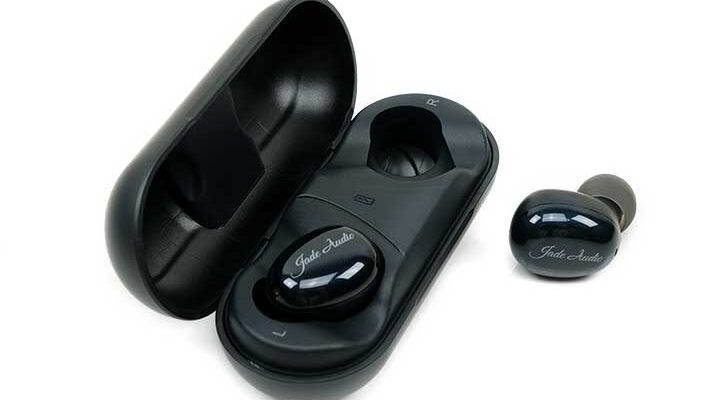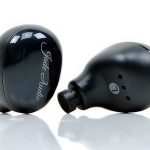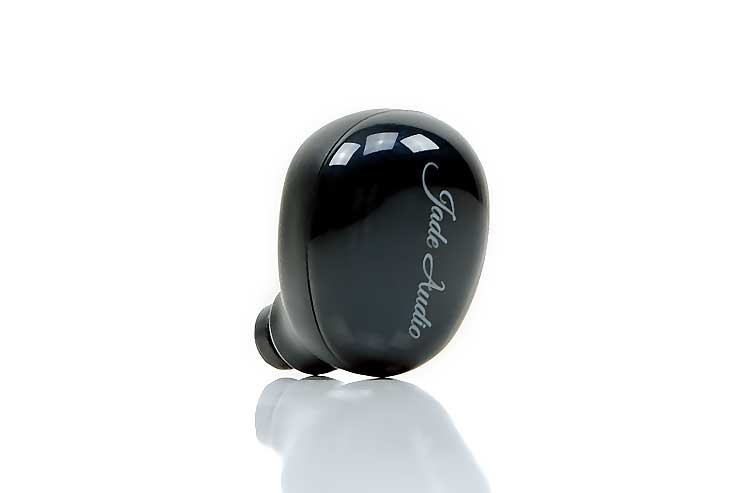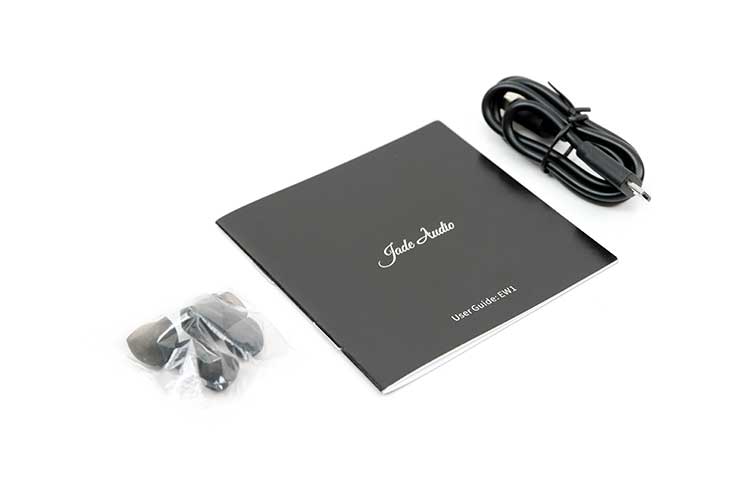The Jade Audio EW1 TWS is a budget-priced true wireless system featuring Bluetooth 5.0 and aptX decoding. Jade Audio is also a sub-brand of FiiO. The EW1 is priced between $32.99 – US $62.48 at the time of writing.
Disclaimer: The Jade EW1 TWS sent to us is a sample in exchange for our honest opinion. We thank Jade Audio & FiiO for this opportunity.
To learn more about our Wireless reviews on Headfonics you can click here.
Note, this review follows our new scoring guidelines for 2020 which you can read up on here.
To know Jade Audio is to know FiiO. In effect, this is a sub-brand of their more famous counterpart and judging by the current product line-up a lot of the previous FiiO products are now residing there, albeit with a few tweaks and name changes.
However, to my knowledge, the EW1 TWS is entirely Jade Audio and has never been a FiiO product so it is 100% new to us here on Headfonics. Jade Audio also uses a direct sales model also so all links to their products go direct to an AliExpress store where you can buy them right away, include the EW1.
Tech Inside
Despite the company’s fledgling status, the marketing collateral on the EW1 is dripping in FiiO professionalism. This is not a boutique offering by any means and I suspect a lot of existing R’n’D FiiO has learned in the last few years on wireless and product marketing has come to pass on the EW1. The fact the EW1 comes with a price tag that ranges as low as $32.99 on Amazon US is a solid bonus for the features you get.
The EW1 is a Qualcomm QCC3020 powered true wireless system featuring Bluetooth 5.0, IPX5 grade element resistance and interestingly aptX decoding capability, (no aptX LL). This places it on equal footing with our recently reviewed MPOW M5 TWS which also had aptX for a similar price.
aptX
aptX is about as good as you can expect from a TWS system at the time of writing. LDAC is not yet available and aptX-HD is still not possible unless they swap out that QCC3020 chipset for a QCC3034 chipset which does support it.
I suspect the current TWS design and implementation might not allow for that, particularly on size and battery life as well as left to right communicati0on protocols with regard to stability. In any event, aptX is the ceiling for both budget and flagship with the current 2020 focus on premium ANC technology which the EW1 does not have.
cVc 8.0 NC
Like the MPOW M5, the EW1 TWS uses cVc 8.0 software noise cancellation. cVc 8.0 is a feature of the Qualcomm QCC3020 chipset inside which helps suppress background noise and echo feedback on the M5.
cVc technology is a set of noise reduction algorithms built into the microphone audio processing circuit of the MEW1. It is primarily designed to improve the quality or clarity of voice calls and lower interference from wind or outside noise. This tech should not be confused with ANC which is much more aggressive in noise cancellation.
IPX5
IPX5 is lower than the MPOW M5’s excellent IPX7 rating, but it is still more than useful for gym workouts and higher than the Airdots IPX4 standard. IPX4 is more related to water droplets and primarily sweat whereas IPX5 will take a direct low-pressure high flow stream of water such as a faucet or tap. IPX7 is a full submerge and the EW1 is not rated to be able to do that like the MPOW M5 but honestly, who does that?
Design
The EW1 TWS design is sort of a halfway house between the Airdots and the MPOW M5. It is not quite as plain jane as the Airdots and a little smoother in its finish compared to the M5. However, it feels more like an Airdots in its general form factor than the M5’s deeper or taller design.
From the side, they look very similar indeed save for a slightly thicker and stubbier nozzle on the Airdots. The lack of an LED ring, in favor of a small LED diode to the front, means the EW1 housing is a little smoother, more rounded and on the whole more elegant look. Elegance is further enhanced on the EW1 with its classical italic white font branding on the faceplates.
The plastics finish is polished as opposed to matte black and a little nicer to the touch on the EW1 compared to the Airdots. This is on the same level as the M5 in terms of finishing which is also fairly smooth. The all-plastic design means these are light as well as quite small so they won’t stick out of your ear.
Comfort & Isolation
The smaller rounded jellybean styling combined with the lightweight plastic design makes the EW1 a comfortable experience in your ear. The only unknown is the tip size and how it works best for you which is where the level of isolation is going to be controlled.
There is no custom universal shaping on the EW1 but the angle of the nozzle and size of the tips do a decent job of ensuring it does not crash down on your outer ear. In summary, a comfortable fit with little movement using the stock tips.
Tips
The EW1 TWS comes with a set of single bore silicone tips in small, medium and large. No surprise here with these budget TWS and to be honest, you will rarely get more than that at this price point. The silicone is a better material than the Airdots but I prefer the solid grey stem finish of the M5 stock tips.
Isolation is ok if you can get the right fit and to be honest I would refrain from seeking out foam tips to try and enhance the seal. Foam tips really dull the treble and warm up the sound leading to a strong perception of a loss of detail on the EW1.
Much like the M5, how far back that nozzle is pushed by tips will have an effect on the final presentation of the EW1. For that reason, I can’t recommend SpinFits which tended to push the EW1 more out of my ear than in leading to a loss of perceived power.
The best tips were Final E and FiiO’s own biflange options. The Final E was the most immersive and powerful and the biflange the most neutral with less bass warmth but perhaps a better balance.
Controls
Touch
The ERW1 uses touch instead of physical push buttons which so far, I prefer. Touch avoids the annoying situation I get with physically controlled TWS systems ending up halfway down my ear canals due to finger pressure. Touch means less adjusting and less annoyance.
However, like the KZ T1, touch brings a new set of irritations and that’s accidental swipes and activations and yes, the EW1 is prone to that. I guess it depends on how wide that touch surface is and how sensitive the plates are to your fingers. I would suggest handling the EW1 on its sides and try to avoid touching the plates unless on purpose.
Configuration
The warning is all the stronger because of the configuration on the EW1 where one press pushes volume up on the right and down on the left. That is kind of dangerous for me. I would have preferred playback control pause and play for one-touch and two touches for volume. On the EW1, it is the other way around with another single press to unpause.
Two taps on the left activate voice assistant whereas pause in play and playback resume are on the right. Long touches on both sides fast forward to the next track (right) and previous track on the left.
To turn them off just touch and hold there for about 8-10 seconds until you hear the charming lady say “power off”.
Charging Case
If the M5 charging cradle looks like a mini-suppository then the EW1 is its plainer mini-me. Definitely, the EW1 is the more pocketable of the two similar form factor cases but this feels a little flimsy on the hinges with some lateral movement under pressure.
The finish is also a bit cheaper looking with a plaint smooth finish compared to the gripper faux leather of the M5. The EW1 case is a bit more intricate in design compared to the Airdots case but the material quality is roughly the same on the EW1 case.
You do not get a huge amount of glowing lights on the EW1 case, just a soft red glow of an LED under the inside central bridge of plastic between the two drivers when charging.
Battery Life
However, the EW1 is probably the best for battery life for the drivers out of the three TWS in question and leaves the KZ T1 in its rearview mirror while we are at it. You are talking 6-7 hours for the buds and 21 hours for the case.
The case is a little short on total capacity compared to the likes of the 35-hour battery charge of the M5 case but 21 hours will give you around 3 cycles and more than enough for any long-distance flight unless you tap your ears every 5 seconds throughout.
Micro USB charging again, ugh. I have come to accept that in 2019 that most of these cheaper TWS systems will use the older charging micro USB slot. So my expectations are suitably lowered. That does mean a sluggish 2 hours to charge the EW1 system from zero to 100%.
Accessories & Packaging
FiiO packaging sensibilities are strong in the Jade Audio EW1 packaging display. This is the nicest I have encountered thus far even if the material used are not that high end. Do they even need to be at this price point?
I was half expecting a green box given the name Jade but nevermind, this is tan and black with a plastic top tray that lifts to show off the accessories with manual underneath.
As you might expect at this price point the lineup of accessories for the EW1 is spartan. You just the absolute essentials to get you up and running. That includes tips, manual and micro USB cable. I have yet to see any 3rd party silicone cases floating around the usual Chinese seller markets like the Airdots. As for tips, you can stick with the stock, but as explained earlier, a set of Final E is preferred.
Click on page 2 below for sound impressions, comparison ladder & verdict












